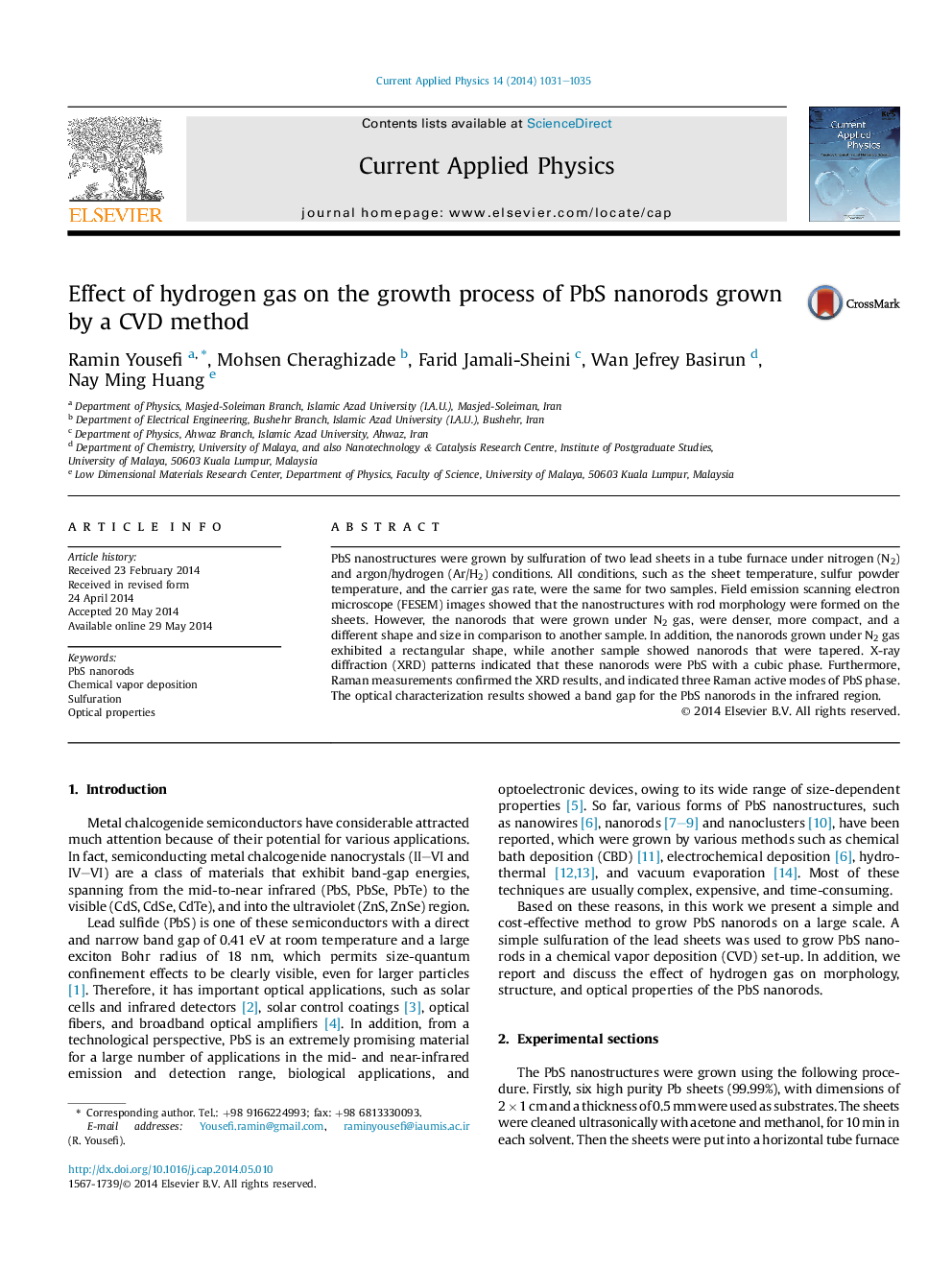| Article ID | Journal | Published Year | Pages | File Type |
|---|---|---|---|---|
| 1785834 | Current Applied Physics | 2014 | 5 Pages |
•PbS nanorods were grown by a simple sulfuration method of lead sheets.•Effect of hydrogen gas on growth process of the PbS nanorods was investigated.•Optical properties of the PbS nanorods were affected by hydrogen gas.
PbS nanostructures were grown by sulfuration of two lead sheets in a tube furnace under nitrogen (N2) and argon/hydrogen (Ar/H2) conditions. All conditions, such as the sheet temperature, sulfur powder temperature, and the carrier gas rate, were the same for two samples. Field emission scanning electron microscope (FESEM) images showed that the nanostructures with rod morphology were formed on the sheets. However, the nanorods that were grown under N2 gas, were denser, more compact, and a different shape and size in comparison to another sample. In addition, the nanorods grown under N2 gas exhibited a rectangular shape, while another sample showed nanorods that were tapered. X-ray diffraction (XRD) patterns indicated that these nanorods were PbS with a cubic phase. Furthermore, Raman measurements confirmed the XRD results, and indicated three Raman active modes of PbS phase. The optical characterization results showed a band gap for the PbS nanorods in the infrared region.
